Evaporative Emission Hoses/Pipes Replacement - Engine/Chassis Front
Removal Procedure
Important: Clean all fuel and evaporative emission (EVAP) line connections and surrounding areas prior to disconnecting the lines in order to avoid possible fuel and/or EVAP system contamination.
- Relieve the fuel system pressure. Refer to Fuel Pressure Relief .
- Disconnect the fuel feed pipe (1) at the fuel rail. Refer to Metal Collar Quick Connect Fitting Service .
- Disconnect the evaporative emission (EVAP) canister purge pipe (2). Refer to Plastic Collar Quick Connect Fitting Service .
- Cap the fuel rail and EVAP pipes.
- Raise and suitably support the vehicle. Refer to Lifting and Jacking the Vehicle in General Information.
- Remove the fuel pipe bracket nut.
- Remove the fuel pipe bracket from the bellhousing stud.
- Remove the fuel hose/pipe clip from the bracket on the automatic transmission.
- If equipped with 4-wheel drive (4WD), remove the fuel hose/pipe clip from the bracket on the transfer case.
- Remove the front fuel tank. Refer to Fuel Tank Replacement .
- Remove the fuel line bracket nuts.
- Remove the fuel/EVAP line bundle.
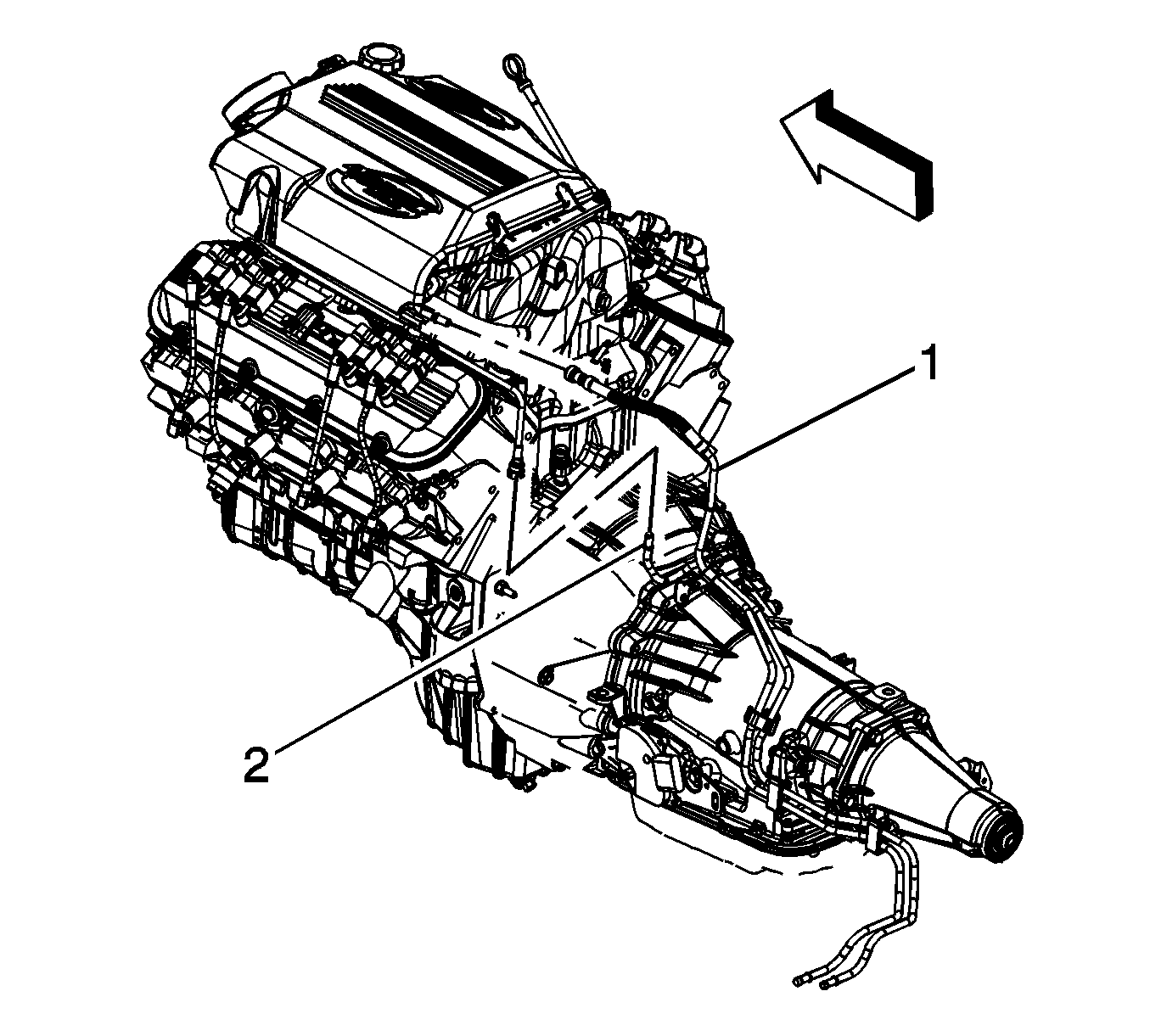

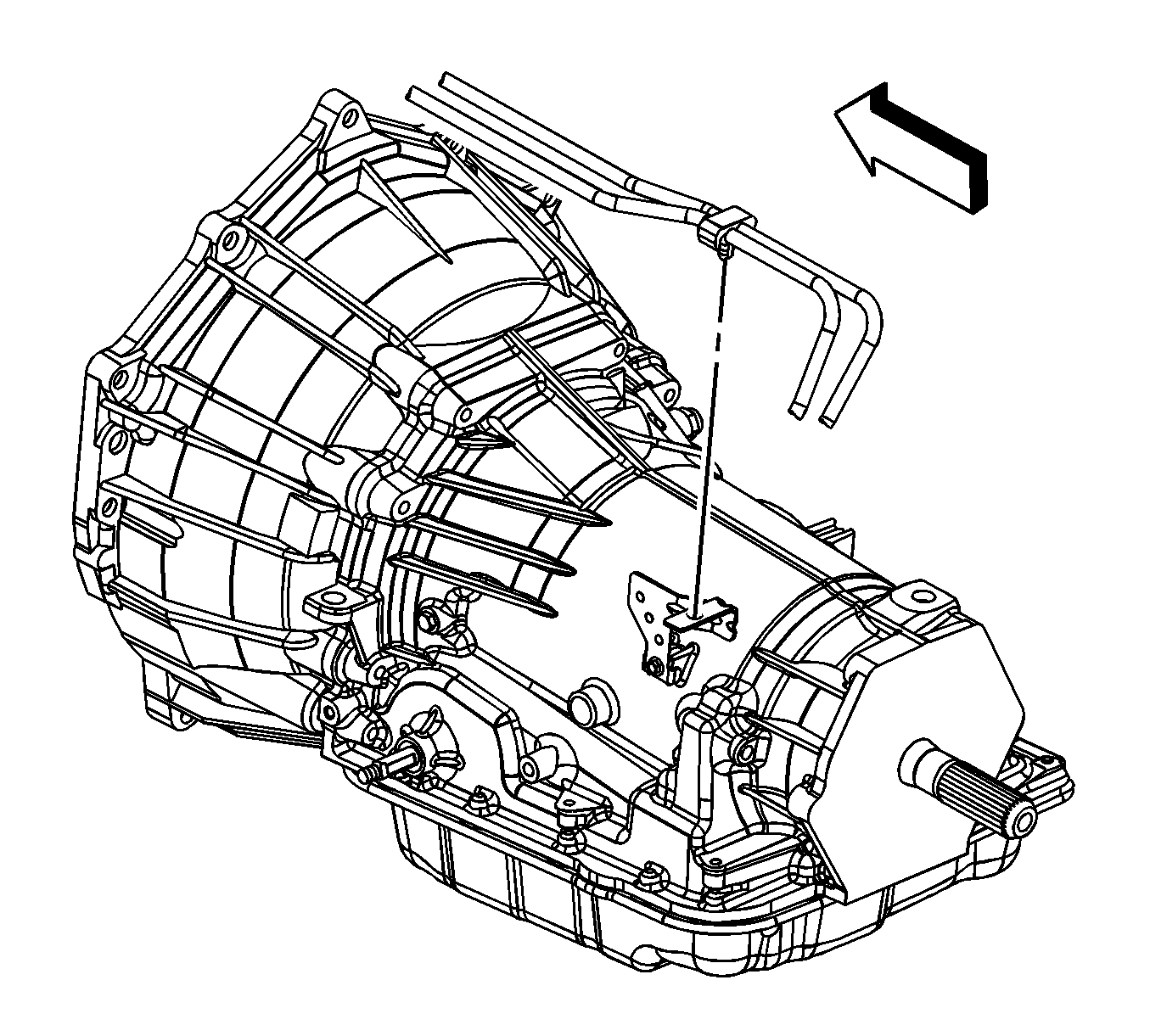
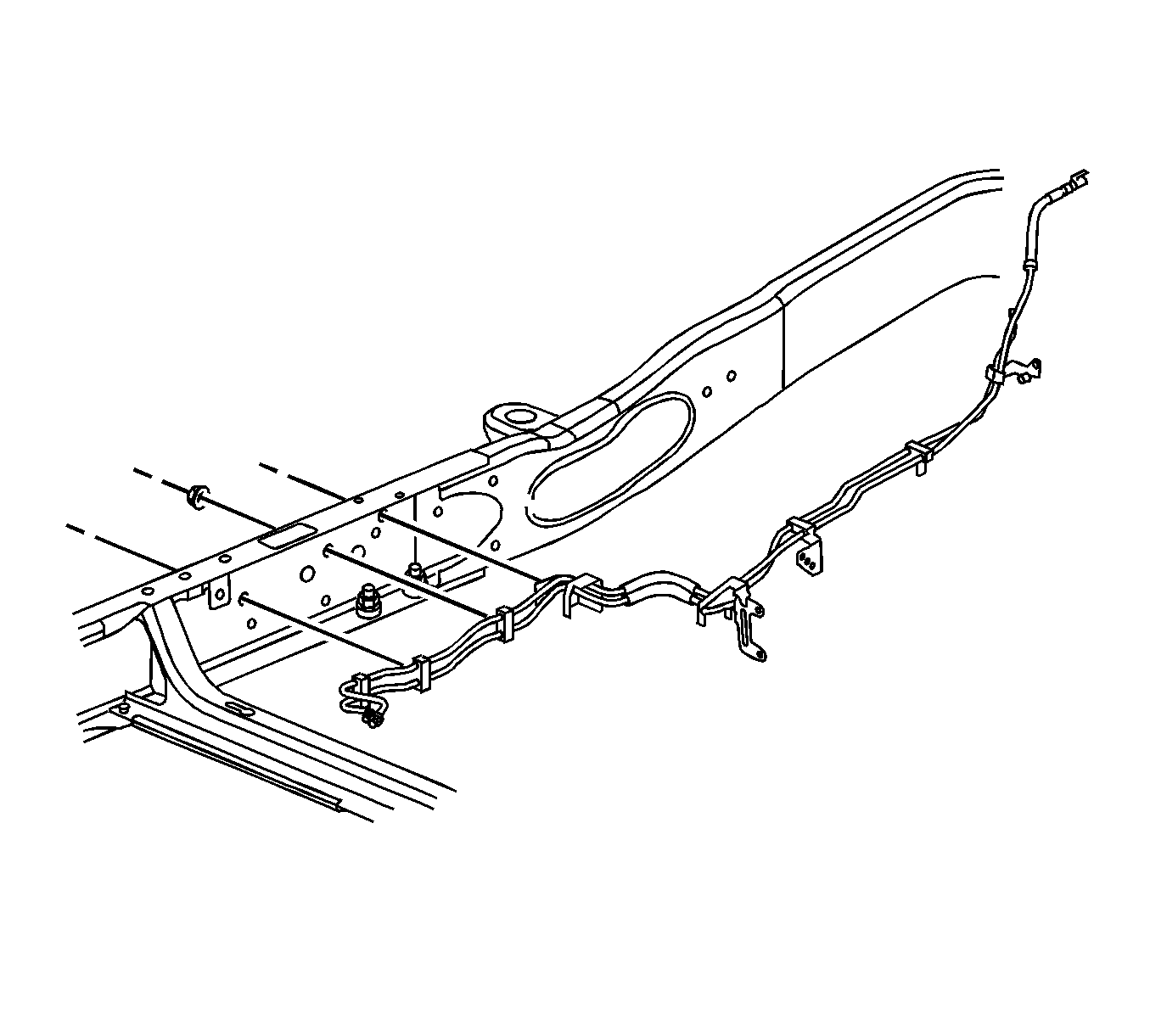
Installation Procedure
- Install the fuel/EVAP line bundle.
- Install the fuel line bracket nuts.
- Install the front fuel tank. Refer to Fuel Tank Replacement .
- If equipped with 4WD, install the fuel hose/pipe clip to the bracket on the transfer case.
- Install the fuel hose/pipe clip to the bracket on the automatic transmission.
- Install the fuel pipe bracket to the bellhousing stud.
- Install the fuel pipe bracket nut.
- Lower the vehicle.
- Remove the caps from the fuel rail and EVAP pipe.
- Connect the EVAP canister purge pipe (2). Refer to Plastic Collar Quick Connect Fitting Service .
- Connect the fuel feed line (1) to the fuel rail. Refer to Metal Collar Quick Connect Fitting Service .
- Install the fuel fill cap.
- Connect the negative battery cable. Refer to Battery Negative Cable Disconnection and Connection in Engine Electrical.
- Use the following procedure in order to inspect for leaks:
Notice: Refer to Fastener Notice in the Preface section.

Tighten
Tighten the bolt to 12 N·m (106 lb in).


Tighten
Tighten the nut to 10 N·m (89 lb in).

| 14.1. | Turn the ignition ON, with the engine OFF, for 2 seconds. |
| 14.2. | Turn the ignition OFF for 10 seconds. |
| 14.3. | Turn the ignition ON, with the engine OFF. |
| 14.4. | Inspect for fuel leaks. |
Evaporative Emission Hoses/Pipes Replacement - Engine/Chassis Intermediate
Removal Procedure
Important: Clean all fuel and evaporative emission (EVAP) line connections and surrounding areas prior to disconnecting the lines in order to avoid possible fuel and/or EVAP system contamination.
- Relieve the fuel system pressure. Refer to Fuel Pressure Relief .
- Remove the spare tire stowage lock cylinder.
- Remove the spare tire.
- Drain the rear fuel tank. Refer to Fuel Tank Draining .
- Remove the rear exhaust insulator.
- Remove the spare tire hoist crossmember bolts and crossmember.
- Disconnect the evaporative emission (EVAP) canister quick connect fittings. Refer to Plastic Collar Quick Connect Fitting Service .
- Disconnect the fuel and EVAP intermediate lines from the front tank. Refer to Plastic Collar Quick Connect Fitting Service .
- Disconnect the fuel pressure sensor electrical connector (1).
- Support the fuel tank with a suitable jack.
- Remove the fuel tank strap bolts.
- Remove the fuel tank straps.
- With the aid of an assistant, lower the rear tank until the intermediate line connections can be reached.
- Disconnect the fuel and EVAP intermediate lines from the rear tank. Refer to Plastic Collar Quick Connect Fitting Service .
- Remove the fuel and EVAP intermediate lines.
- Cap the fuel and EVAP lines in order to prevent possible EVAP/fuel system contamination.
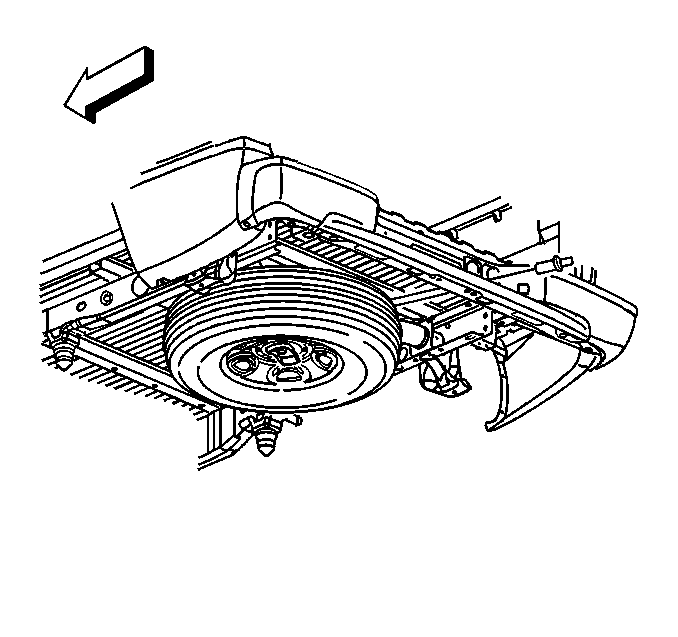
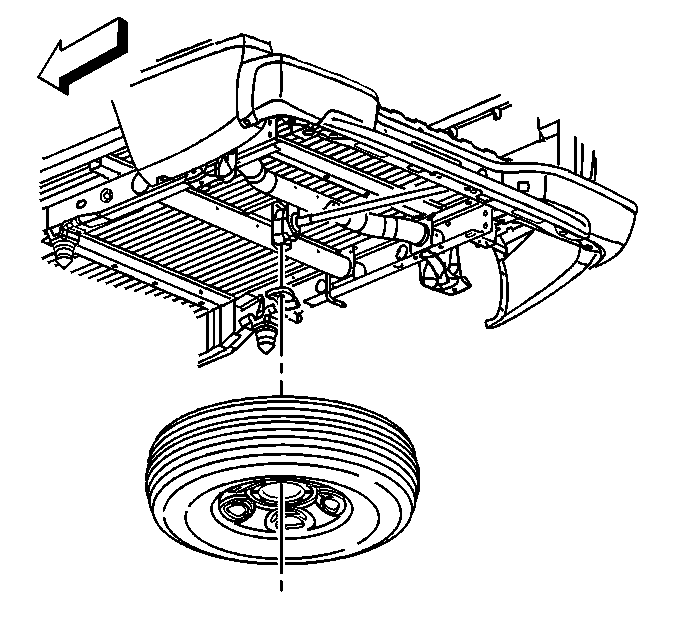
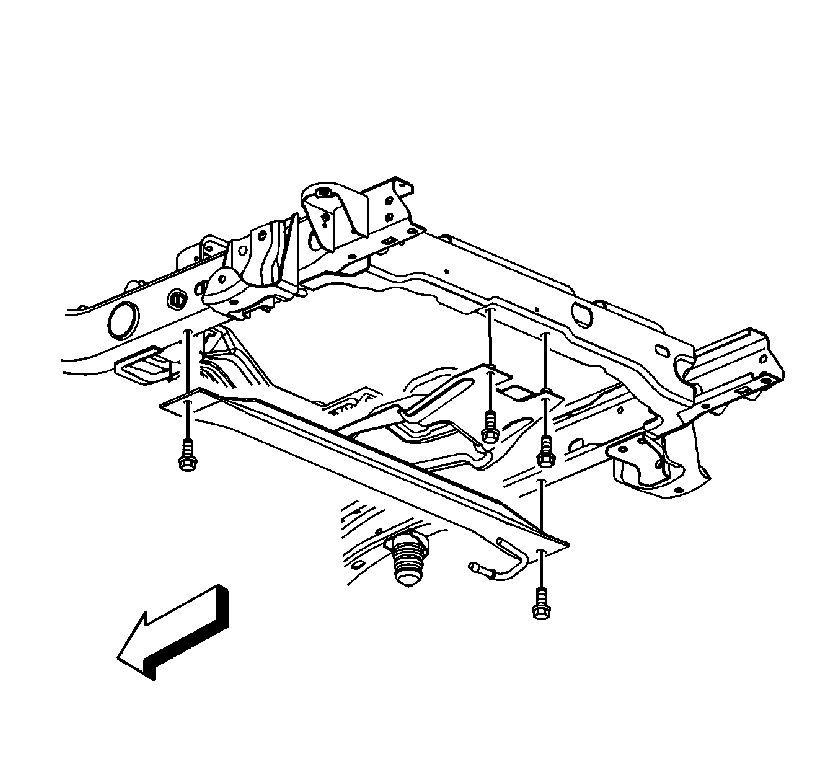
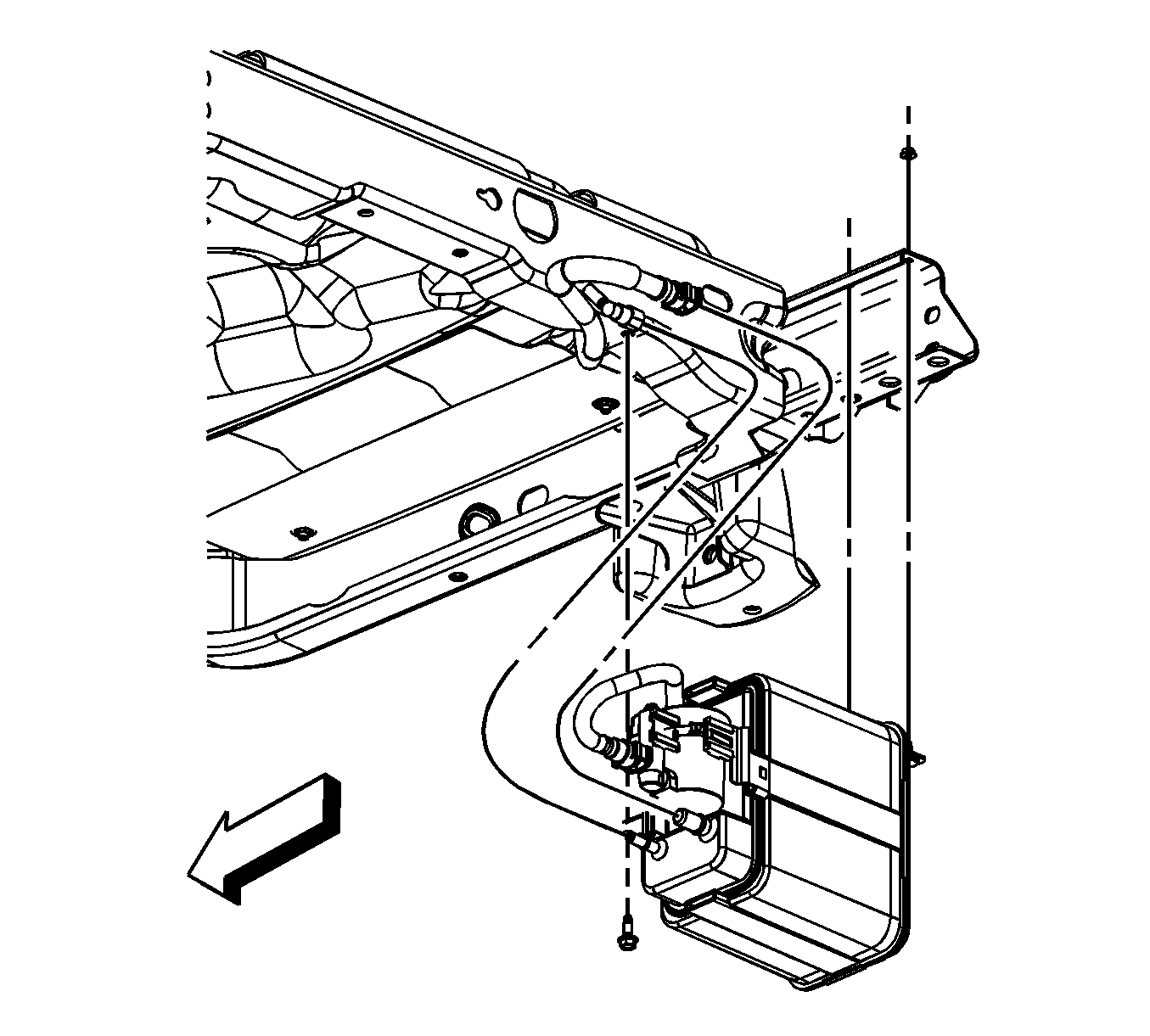

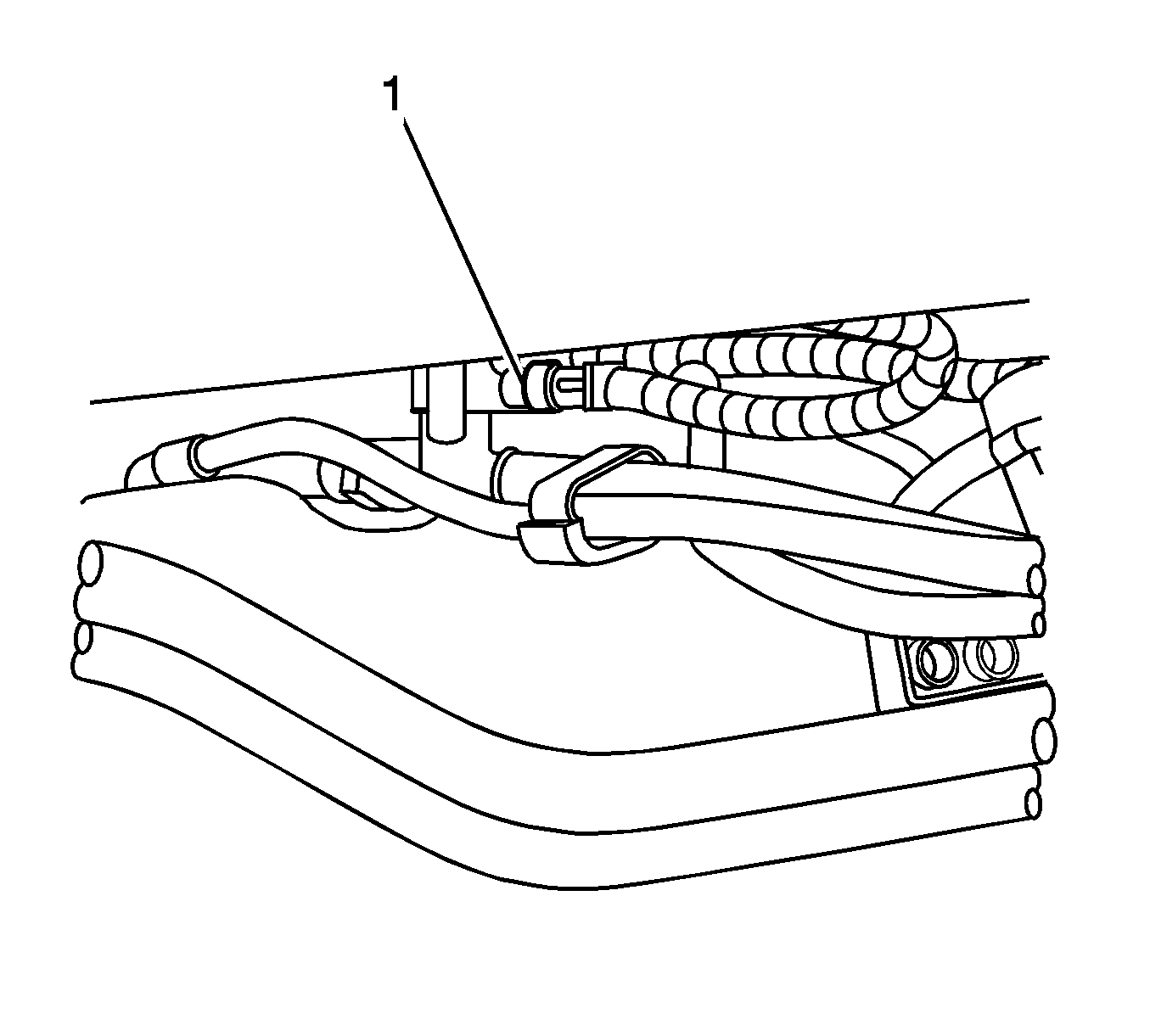
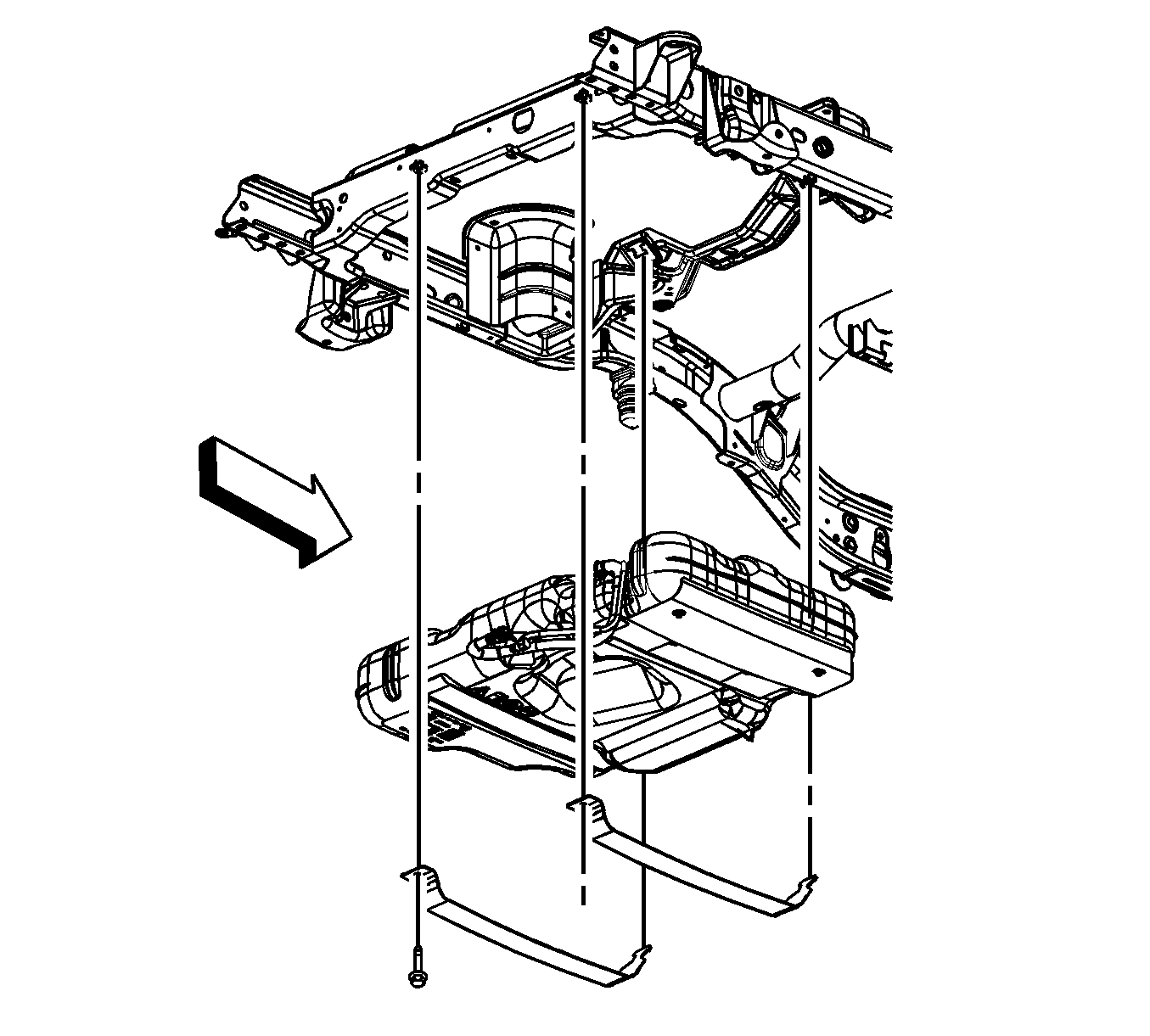
Notice: Refer to Damage to Fuel Tank Straps Notice in the Preface section.
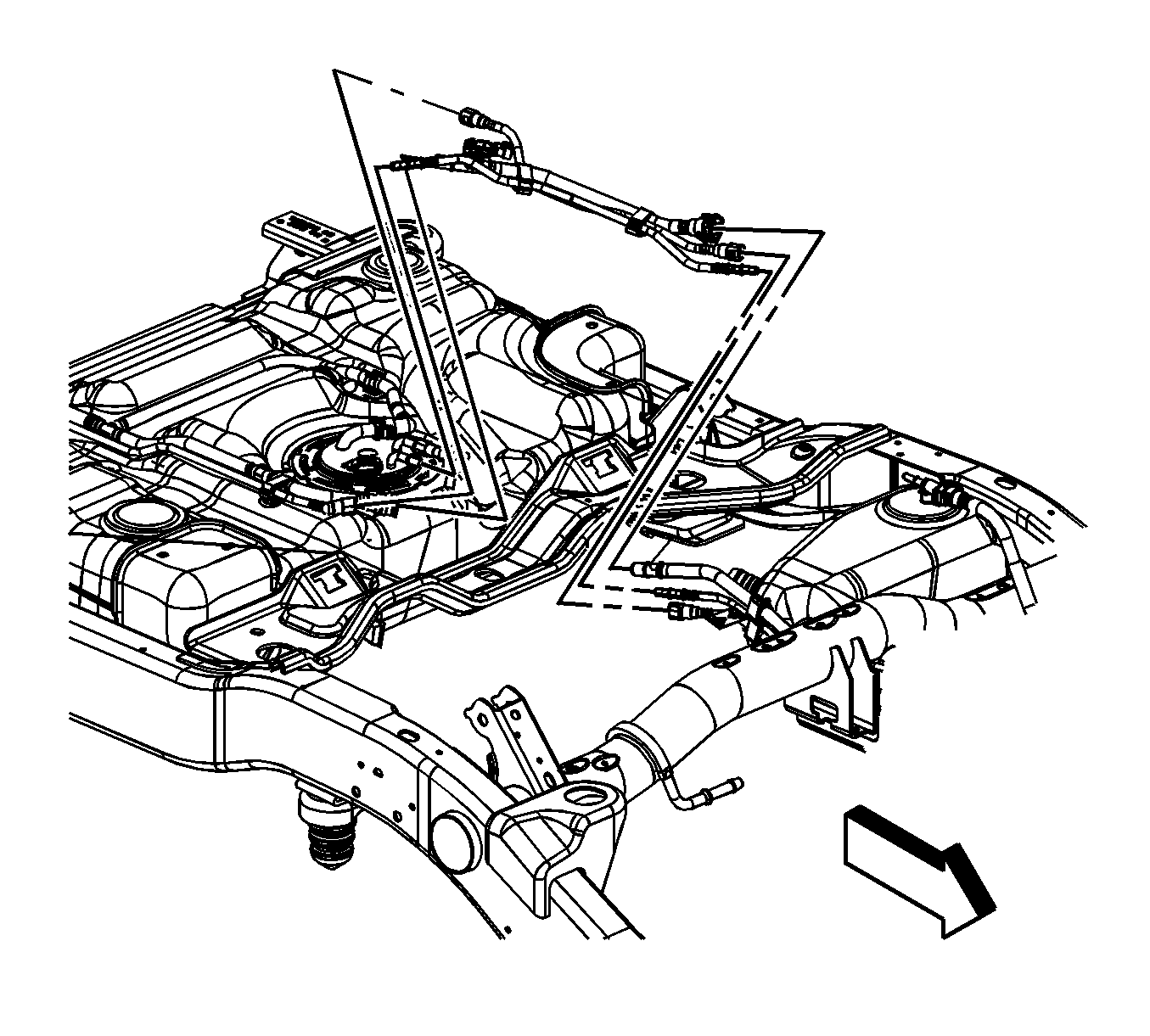
Installation Procedure
- Remove the caps from the fuel and EVAP lines.
- Install the fuel and EVAP intermediate lines.
- Connect the fuel and EVAP intermediate lines to the rear tank. Refer to Plastic Collar Quick Connect Fitting Service .
- With the aid of an assistant, completely raise the rear tank.
- Install the fuel tank straps.
- Install the fuel tank strap bolts.
- Remove the adjustable jack from under the fuel tank.
- Connect the fuel pressure sensor electrical connector (1).
- Connect the fuel and EVAP intermediate lines to the front tank. Refer to Plastic Collar Quick Connect Fitting Service .
- Connect the EVAP canister quick connect fittings. Refer to Plastic Collar Quick Connect Fitting Service .
- Install the spare tire hoist crossmember and bolts.
- Install the rear exhaust insulator.
- Remove the spare tire.
- Install the spare tire stowage lock cylinder.
- Install the fuel tank filler housing.
- Install the fuel tank filler housing to fuel tank fill pipe bolts.
- Install the fuel tank filler housing to body TORX® screws (1) and retainer (2).
- Refill the fuel tank.
- Install the fuel fill cap.
- Connect the negative battery cable. Refer to Battery Negative Cable Disconnection and Connection in Engine Electrical.
- Use the following procedure in order to inspect for leaks:


Notice: Refer to Fastener Notice in the Preface section.
Tighten
Tighten the bolts to 40 N·m (30 lb ft).




Tighten
Tighten the bolts to 50 N·m (37 lb ft).


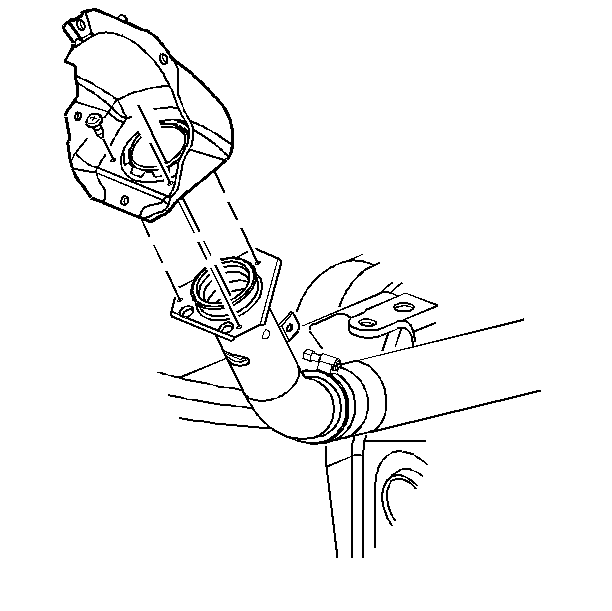
Tighten
Tighten the bolts to 2.3 N·m (20 lb in).
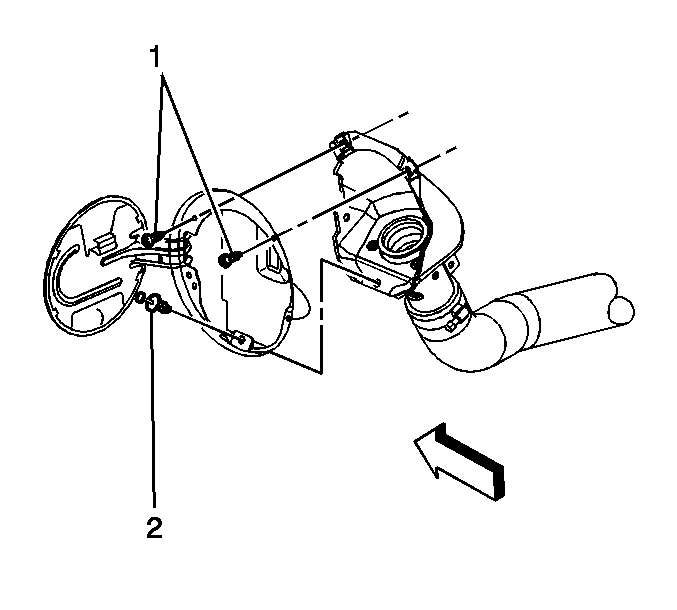
Tighten
Tighten the screws to 2.3 N·m (20 lb in).
| 21.1. | Turn the ignition ON, with the engine OFF, for 2 seconds. |
| 21.2. | Turn the ignition OFF for 10 seconds. |
| 21.3. | Turn the ignition ON, with the engine OFF. |
| 21.4. | Inspect for fuel leaks. |
